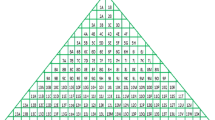Abstract
Disruptive behaviors are often exhibited by children with severe disabilities during difficult teaching tasks. Because learning verbal communication can be a difficult task for nonverbal children with autism, disruptive behaviors are common during such interventions. The purpose of this experiment was to assess whether the incorporation of parameters of natural language interactions and motivational techniques might reduce disruptive behavior during language teaching tasks. Within a repeated reversals design with order of conditions and number of sessions varied within and across children, treatment was conducted for two language teaching conditions. During one condition trials were presented serially in a traditional analog clinical format where the therapist presented instructions, prompts, and reinforcers for correct responses. The other condition incorporated parameters of natural language interactions and motivational techniques, such that stimulus items were functional and varied; natural reinforcers were employed; communicative attempts were reinforced; and trials were conducted within a natural interchange. Results showed that greater improvements in responding and considerably less (often negligible) disruptive behavior occurred during the natural language teaching conditions. Results are discussed with respect to their implications for improving language interventions, and with respect to reducing disruptive behavior without the need for specialized or severe interventions focused specifically on the disruptive behavior.
Similar content being viewed by others
References
Barlow, D. H., & Hersen, M. (1984).Single case experimental designs: Strategies for studying behavior change (2nd ed.). Elmsford, NY: Pergamon.
Camarata, S. M., & Nelson, K. E. (in press). Treatment efficiency as a function of target selection in the remediation of child language disorders.Clinical Linguistics and Phonetics.
Carr, E. G. (1982). Sign language. In R. L. Koegel, A. Rincover, & A. L. Egel (Eds.),Educating and understanding autistic children. San Diego, CA: College Hill.
Carr, E. G., & Durand, V. M. (1985). Reducing behavior problems through functional communication training.Journal of Applied Behavior Analysis, 18, 111–126.
Carr, E. G., Newsom, C. D., & Binkoff, J. A. (1976). Stimulus control of self-destructive behavior in a psychotic child.Journal of Abnormal Child Psychology, 4, 139–153.
Charlop, M. H., & Milstein, J. P. (1989). Teaching autistic children conversational speech using video modeling.Journal of Applied Behavior Analysis, 22, 275–285.
Dunlap, G. (1984). The influence of task variation and maintenance tasks on the learning and understanding of autistic children.Journal of Experimental Child Psychology, 37, 41–64.
Dunlap, G., Dunlap, L. K., Clarke, S., & Robbins, F. R. (in press). Functional assessment, curricular revision, and severe behavior problems.Journal of Applied Behavior Analysis.
Dyer, K., Dunlap, G., & Winterling, V. (1990). Effects of choice making on the serious problem behaviors of students with severe handicaps.Journal of Applied Behavior Analysis, 23, 515–524.
Garfin, D. G., & Lord, C. (1986). Communication as a social problem in autism. In E. Schopler & G. B. Mesibov (Eds.),Social behavior in autism. New York: Plenum Press.
Hart, B. M., & Risley, T. R. (1974). Using pre-school materials to modify the language of disadvantaged children.Journal of Applied Behavior Analysis, 7, 243–256.
Koegel, L. K., & Koegel, R. L. (1986). The effects of interspersed maintenance tasks on academic performance in a severe childhood stroke victim.Journal of Applied Behavior Analysis, 19, 425–430.
Koegel, R. L., & Traphagen, J. (1982). Selection of initial words for speech training with nonverbal children. In R. Koegel, A. Rincover, & A. L. Egel (Eds.),Educating and understanding autistic children. San Diego, CA: College Hill.
Koegel, R. L., Dyer, K., & Bell, L. (1987). The influence of child-preferred activities on autistic children's social behavior.Journal of Applied Behavior Analysis, 20, 243–252.
Koegel, R. L., O'Dell, M. C., & Dunlap, G. (1988). Producing speech use in nonverbal autistic children by reinforcing attempts.Journal of Autism and Developmental Disorders, 18, 525–538.
Koegel, R. L., O'Dell, M. C., & Koegel, L. K. (1987). A natural language teaching paradigm for nonverbal autistic children.Journal of Autism and Developmental Disorders, 17, 187–200.
Laski, K. E., Charlop, M. H., & Schreibman, L. (1988). Training parents to use the natural language paradigm to increase their autistic children's speech.Journal of Applied Behavior Analysis, 21, 391–400.
Lovaas, O. I. (1977).The autistic child; language development through behavior modification. New York: Irvington.
Martin, G., & Pear, J. (1978).Behavior modification: What it is and how to do it. Englewood Cliffs, NJ: Prentice-Hall.
Neef, N. A., Iwata, B. A., & Page, T. J. (1980). The effects of interspersal training versus high density reinforcement on spelling acquisition and retention.Journal of Applied Behavior Analysis, 13, 153–158.
Shah, A., & Wing, L. (1986). Cognitive Impairments affecting social behavior in autism. In E. Schopler & G. B. Mesibov (Eds.),Social behavior in autism. New York: Plenum Press.
Warren, S. F., & Gazdag, G. (1990) Facilitating early language development with milieu intervention procedures.Journal of Early Intervention, 14, 62–86.
Williams, J. A., Koegel, R. L., & Egel, A. L. (1981). Response-reinforcer relationships and improved learning in autistic children.Journal of Applied Behavior Analysis, 14, 53–60.
Author information
Authors and Affiliations
Additional information
Preparation of this manuscript was supported in part by National Institute on Disability and Rehabilitation Research Cooperative Agreement No. G0087C0234; and by U. S. Public Health Service Research Grants MH28210 and MH39434 from the National Institute of Mental Health. The authors thank William Frea, Christine Hurley, Amanda Damron, Lisa Daniel, and Teresa Paslawski for their assistance during this investigation.
Rights and permissions
About this article
Cite this article
Koegel, R.L., Koegel, L.K. & Surratt, A. Language intervention and disruptive behavior in preschool children with autism. J Autism Dev Disord 22, 141–153 (1992). https://doi.org/10.1007/BF01058147
Issue Date:
DOI: https://doi.org/10.1007/BF01058147




